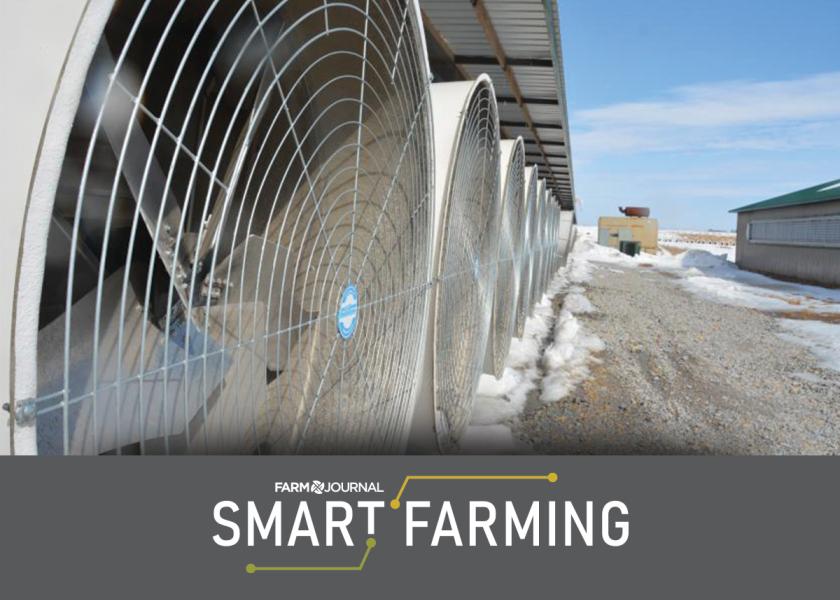Facility Focus: 4 Tips to Manage Ventilation During the Off-Season

Farm Journal’s Smart Farming Week is an annual week-long emphasis on innovation in agriculture. The goal is to encourage you to explore and prioritize the technology, tools and practices that will help you farm smarter. Innovation today ensures an efficient, productive and sustainable tomorrow.
It’s no secret - winter weather can be a bear to deal with. The extreme temperature swings and harsh wind chills tack on extra work dairy farmers just don’t have time for. Couple that with the possibility of heavy snow and you’ve got the recipe for a massive headache.
Keeping cows, calves and employees comfortable during the winter months can often feel like a balancing act. However, according to Mike Wolf, DVM and consulting veterinarian for VES-Artex, finding the right combination between keeping animals warm while also providing adequate air exchange is essential.
To help avoid the winter ventilation woes, Wolf says producers should focus on the following four areas for off-season ventilation success.
4 Focus Points
Even Fresh Air Distribution – Stale, stagnant air is a recipe for poor respiratory health. Therefore, it’s critical to provide adequate ventilation and effectively remove warm, humid, contaminated air from the building.
“We want to make sure that we are bringing fresh air in and that it’s being distributed evenly throughout the facility,” Wolf says.
Prevent Freezing – If you’ve ever had to scrape frozen alleyways, you know just how not-so-fun of a job it can be. Additionally, it can be uncomfortable and unsafe for both animals and employees to walk on. Wolf recommends keeping a keen eye on barn thermometers to ensure temperatures don’t drop below freezing.
“Watch areas in the barn where fresh air is coming in,” he adds. “Temperatures tend to drop in those spots and can freeze alleyways or stalls.”
Control Dew Points – Managing moisture levels is another key piece to keeping cows healthy and comfortable. According to Wolf, it’s important to keep dew points lower than the external ambient temperature to help prevent condensation.
“Controlling dew points and humidity levels helps prevent dampness and dripping within the barns,” he adds. “This dampness adds discomfort to cows as well as the people working with them.”
Even during subfreezing temperatures, low level air exchange must occur to help remove the moisture continuously produced by animals.
Maintain Air Quality – Without good air quality, cow health is bound to suffer. That’s why maintaining adequate air exchange is a necessity. As a rule of thumb, facilities should have a minimum of 4 to 8 air changes per hour to help lower respiratory disease risk.
“In terms of ammonia, we want less than 25 ppm for cows and 5 ppm for calves in our facilities no matter the time of year, but especially during winter,” Wolf adds. “This ensures the barn environment remains free from noxious gasses, promoting respiratory health and overall animal well-being.”
Bonus Tip - Conduct Fan Maintenance
Despite the bitter temperatures and blustery winds, the summer heat will soon be knocking on our doors. According to Wolf, winter is a good time to give ventilation equipment a detailed inspection and provide thorough cleaning.
“Take time to conduct fan maintenance such as inspecting motors, belts and tensioners and replace any damaged elements,” he says. “At minimum, fans should be cleaned at least twice a year.”
For more on Smart Farming, read:
- Uniting Technology with the Youngest Herd Members on Your Farm
- He Started Out as a Milker Nearly 30 Years Ago. Now, He's the Manager and a Leader in Technology at Wisconsin's Largest Family-Owned Dairy
- Facility Focus: 4 Tips to Manage Ventilation During the Off-Season
- Beef-on-Dairy: Why Feedlots Crave This Important Information







